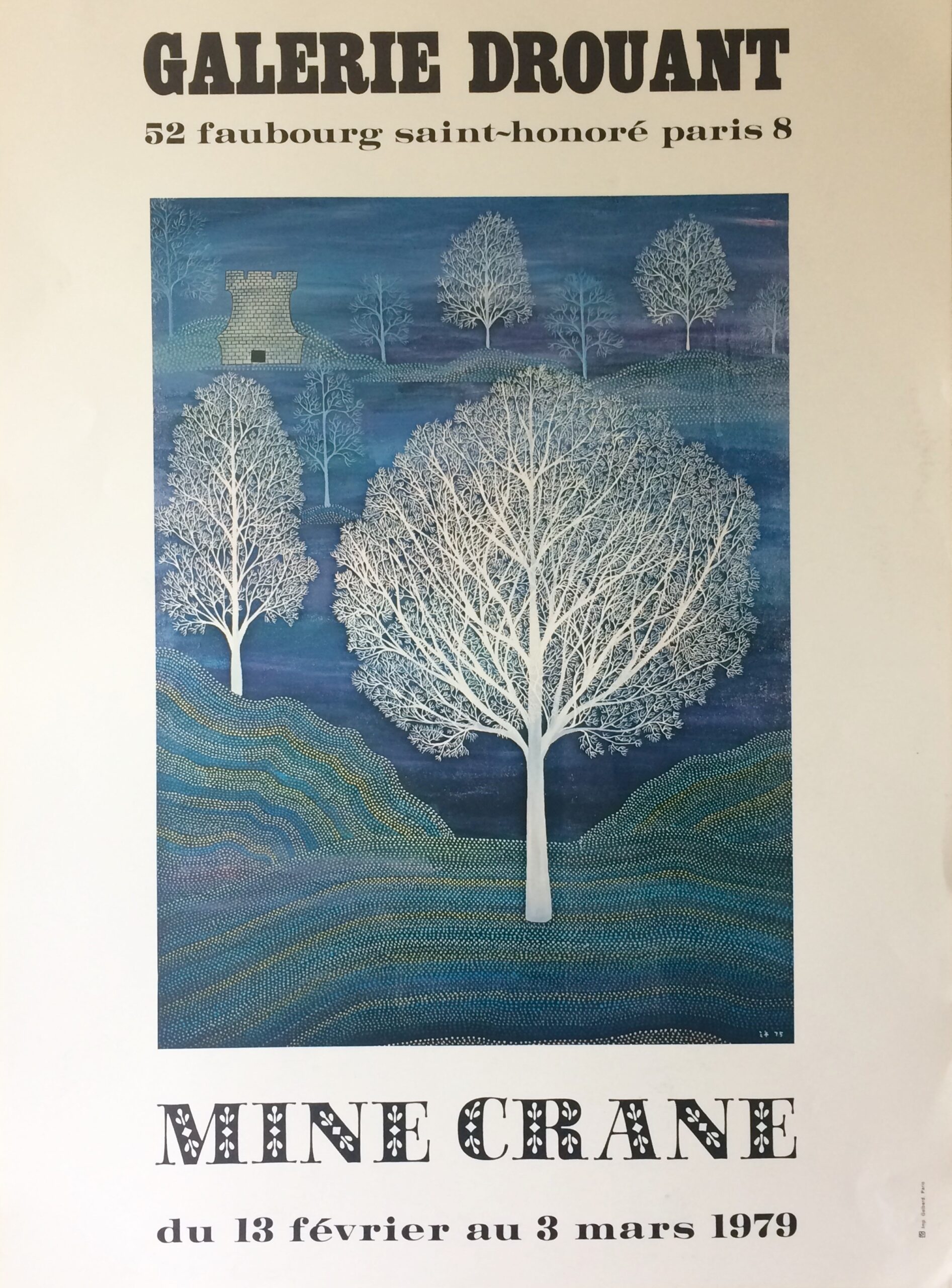Editor’s Note: In celebration of Asian American and Pacific Islander (AAPI) Heritage Month we asked Susan Hill Dolan, Curator at the Crane Estate, to highlight Miné Sawahara Crane, a painter, musician, and dedicated patron of the arts.
Born in Hiroshima, Japan, Miné Sawahara was both a painter and musician, as well as a dedicated patron of the arts. She also loved nature and took great inspiration from her seasonal home on the Crane Estate in Ipswich. Miné met Cornelius Crane (1905-1962), son of Mr. and Mrs. Richard T. Crane, Jr., during his many travels to the Pacific islands, and his home in Tahiti. They married in Japan in 1955 and returned to the United States, where she became an American citizen in 1960.
As a painter, Miné had a distinctive, naïve style – a kind of folk art style that combined elements of Japanese linear drawing with American whimsy and the use of bold color. From the works in our collection, we can see that she was often inspired by her natural surroundings, perhaps to a spiritual level. However, her landscapes and other subjects are often conveyed in imaginary, highly stylized ways rather than in a realistic manner. We also find mystical creatures and dream-like scenes such as a unicorn set against a night sky, cranes sipping droplets of dew from trees, or skies and leaves depicted in rainbow stripes of color.
Miné appears to have been most prolific as an artist in the 1970s and 1980s. She also wrote a book of poetry – printed in Japanese and English together – wherein each poem is illustrated by one of her paintings. This likely accompanied her New York exhibition in 1984. Miné also exhibited in Paris with a 1979 show at Gallerie Drouant, along the famed Faubourg Saint-Honoré. A poster from that show features a work with a small castle turret beyond the bare, white trees and colorfully striped landscape of the foreground – the same turret adopted as an emblem for Castle Hill by the Cranes.
Along with her career as a painter, Miné was also a fine flutist and harpist. As testament to her dedication to the musical arts, Miné established the Mrs. Cornelius Crane Scholarship at the famed Julliard School of Music.
Cornelius and Miné enjoyed life tenancy at Castle Hill, living part-time in the Brown Cottage (now The Inn at Castle Hill). They also created a flower garden in the former Vegetable Garden, where Miné had a small studio in one of the towers. Their favorite place, however, was the White Cottage on Choate Island, a Royal Barry Wills-designed house with breathtaking views of Ipswich Bay. It was on the summit of the island that they chose to be buried. Choate Island and its four surrounding islands became the Crane Wildlife Refuge, a gift to The Trustees from Miné Crane in 1974. Although she maintained homes in New York, Aspen and Dark Harbor, Maine, Miné Crane always had a special place in her heart for the Crane Estate. She continued to spend time in Ipswich every year until her death in 1991.





